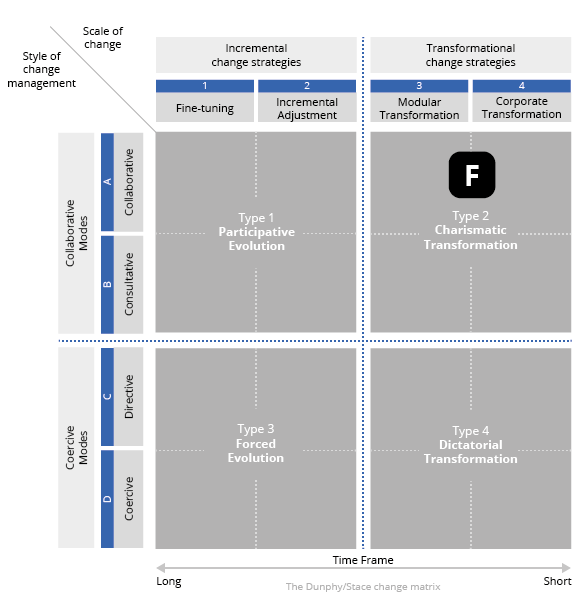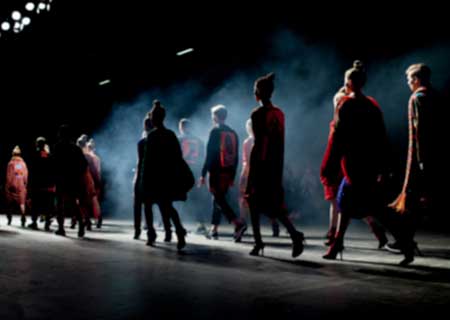What is Fashioning-Change?
A Research Institute with just one mission: making your life easier all change long
Fashioning-Change is a scientifically proven change theory based on fashion and more specifically the social fashion processes that lead to fashion trends. This change theory generates precise knowledge and perspectives that help managers and board members to realize their own ideas and change processes now and in the future. This theory enables managers to determine - at an early stage- whether their intended change has any potential to become a trend and succeed within their organization. The Fashioning-Change Expert Guide is a supportive tool developed to translate this scientific change theory into a practically applicable change theory.
This Expert Guide is an on-line and real time expert system consisting of two important components. First of all The Expert View and secondly The Dashboard.
The Expert View functions as your personal change expert
- The Expert View translates the relevant fashion theory concepts into practically applicable change interventions.
- During the different phases of the change process, the manager gets personal and specific advice as back-up during turbulent times.
By means of the dashboard the different stages of the change process can be followed on-line and in real time.
The ultimate advantage of Fashioning-Change is the fact that you are in charge of the change process. An additional benefit is the fact that you can follow your own change initiatives in real time and see it spreading throughout the organization like an oil spill.
POSITIONING IN THE WORLD OF CHANGE
We offer a specific theory for specific circumstances
A one-size-fits-all approach doesn't suit everyone
So, it is NOT the next 'one best way' change theory
It is a 'situational' change theory
For which situations is Fashioning-Change suitable?
To position Fashioning-Change clearly, we use the change matrix of Dunphy & Stace. They describe a number of typologies of change strategies. When considering the underlying characteristics and properties of Fashioning-Change, they fit in seamlessly with type 2 Charismatic Transformation. Fashioning-Change is therefore applied in corporate and modular transformations where the change management style is focused on collaboration and advice.









Scientific Fundamentals
Dissertation Fashioning Change
The Metaphorical Blend of Fashion and Organizational Change
Fashioning-Change's roots lie in a 7-year scientific research that received a first organ point during the defense of the dissertation on March 20, 2015.
The central question this dissertation seeks to address in terms of organizational change is what role do meaningful dynamics play wherever they occur in change initiatives. Once I can understand the dynamics of change processes in individuals, groups and organizations from within, I can speculate about the form that interventions take whether desirable or not.
In this dissertation the emphasis is on ‘wishing to understand’ in particular whilst making use of fashion as a metaphor to generate new and deeper insights. The emphasis lies on trying to understand and describe the actuality of change for those who see change initiatives coming their way: the 'receivers'.
What emerges is a field of tension. On the one hand many publications suggest that organizations have to change effectively and quickly as a vital condition needed for survival in a market environment that has changed drastically. On the other hand it appears that change initiatives are deployed within organizations to get them moving but are only effective in dribs and drabs. It is precisely this field of tension that determines how relevant this research is to society as a whole.
My particular point of view is concerned with the academic studies about organizational change. This means I study organizational change based on theories formed concerning the way in which fashion develops. The title of my dissertation is Fashioning Change, The Metaphorical Blend of Fashion and Organizational Change.
I am therefore using fashion as a metaphor that I can use when studying organizational change. Besides this, I apply theories and concepts that are used within fashion theory for change initiatives. This means for example that I translate the concept of celebrity endorsement – famous and well-known personalities wearing the latest fashion and having an influence on whether a new fashion trend actually takes off – to concrete change interventions within a single change initiative. Subsequently I study the effects of said interventions.
Hence the central question this dissertation seeks to answer is whether complying with changes with which you are confronted displays any parallels with fashion taking off and developing.
This is the basis on which I carry out my research into organizational change using fashion as a metaphor. This means my research can be typified as a metaphorical study or as research that makes use of metaphors in which I look into the extent to which use of said fashion metaphor can lead to comparable or new insights into the actual dynamics that are associated with organizational change.
